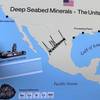ShipConstructor2005 Updates
Small inaccuracies easily add up to significant deviations during multiple steps of assembly. Precise fabrication is a means of reducing rework, delays, and waste. In Japan, Accuracy Control Marks are used for two tasks: aligning stiffeners with high accuracy on plates as well as the accurate joining of plates for welding. This feature is now available through the latest update of ShipConstructor2005.
For aligning stiffeners, a mark is made on the plate and on the stiffener so they can be easily aligned during assembly. ShipConstructor scribes accuracy control marks onto plates during NC-cutting. For stiffeners, ShipConstructor automatically generates stiffener plots with dimensioned locations of the accuracy control marks, or the data can be fed directly to an automated stiffener cutting system.
For joining plates, a line is made on each of two plates to be welded together such that the line runs parallel to the plate’s edge and is offset a certain distance from the edge. Before welding, yard workers measure the distance between these lines at various points to ensure perfect alignment. Without these lines it can be difficult to maintain the correct spacing between plates, especially for plates with beveled edges and weld gaps. ShipConstructor’s product model database automatically provides a list of shipyard standards based on plate thickness and weld type to ensure that the project standard is followed by all designers. These standards are loaded into the project database by production managers. Previously, Japanese shipyards created the accuracy control marks manually within AutoCAD, a time-consuming process. Now, they can create these marks in a few seconds.
Fumiyoshi Kato, president of Yakushiji Kougyo Ltd., said “ARL’s efforts to develop features based on Japanese shipbuilding practices is making ShipConstructor increasingly attractive to Japanese shipyards. At the same time, proprietary shipbuilding software that has been used in Japan for many years is becoming more and more difficult to maintain. It is therefore especially important for Japanese second-tier shipyards to have an alternative like ShipConstructor that is continually being improved in close collaboration with Japanese customers.” Mr. Kato worked closely with Japanese shipyards and ARL to ensure that customer needs and ShipConstructor feature development were perfectly aligned.
Saving Time with Automatic Straking
Australian vessel builders, acknowledged leaders in marine fabrication with aluminum, brought forward the issue of Automatic Straking. Automatic straking is used for automatically dividing predefined areas, such as decks and bulkheads, into planks based on the parameters of available stock, then generating a BOM automatically. Previously, straking had to be done manually, so an automatic method of straking represents a significant saving of time. Automatic straking also works with state-of-the-art prefabricated aluminum extrusions and sandwich panels, which are increasingly being used outside of Australia as well.







